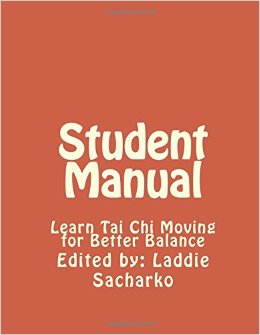Tai Chi Moving for Better Balance Student Guide & DVD Revised 2011
 Regular practice at home using Tai Chi Moving for Better Balance Student Guide & DVD can result in achieving the functional outcomes which measure improvements in balance. This means a reduced risk of falling.
Regular practice at home using Tai Chi Moving for Better Balance Student Guide & DVD can result in achieving the functional outcomes which measure improvements in balance. This means a reduced risk of falling.
Each week, more than 30,000 Americans over the age of 65 are seriously injured by falling, and nearly 250 die from their injuries, according to the National Safety Council. Of those who do survive falling, 20-30 percent experience debilitating injuries that affect them the rest of their lives.
improved control of body positioning
improved gait initiation
improved movement symmetry and coordination
improved lower extremity strength
Tai Chi Moving for Better Balance Student Learning Guide & DVD $29.99 plus $3.99 s & h
CDC’s Tai Chi Moving for Better Balance is designed to improve older adults’ balance. Practice has been shown reduce your chances of falling, and help you improve and maintain your mobility, functional independence, and quality of life well into your later years.
This Student Learning Guide & DVD provide the detailed information you need to plan your program (including a protocol for Parkinson’s) and weekly classes.
Weekly planner (workbook)
Extensive photo demonstration
Detailed written instructions
Supporting DVD video
This is the CDC’s Tai Chi Moving for Better Balance student learning guide & DVD. It is compiled from original research materials, revised 2011 with much more detail and better organization. This new 65 page guide is available in Soft Cover black and white $29.99.
